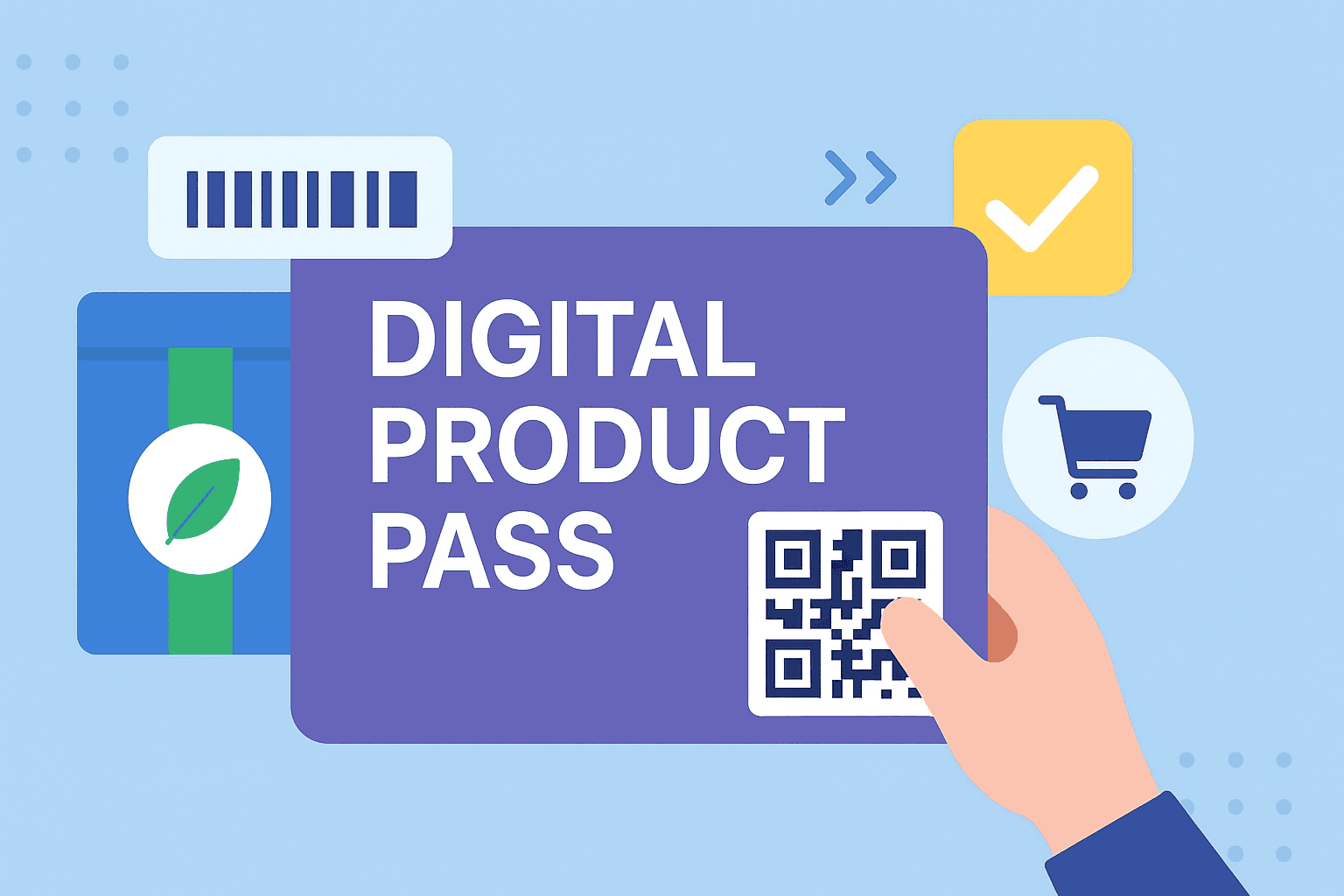GS1 Digital Link: Bridging Physical Products and the Digital World
2025-09-30

What is GS1 Digital Link?
The GS1 Digital Link is a global standard created by GS1, the non-profit organization behind the barcode system. For decades, GS1 standards like the GTIN (Global Trade Item Number) and the EAN/UPC barcodes have been the backbone of retail, logistics, and global trade.
With the rise of digitalization and regulatory requirements such as the Digital Product Pass (DPP), GS1 has extended this system into the digital era. Instead of encoding only a product ID, the GS1 Digital Link allows identifiers to be expressed as web addresses (URLs).
This makes products web-connected: a QR code, NFC chip, or RFID tag can instantly link to dynamic, structured information about the product — from sustainability data to repair instructions and even personalized services.
Why GS1 Digital Link Matters
-
From Static Barcodes to Smart Links
Traditional barcodes only store numbers, requiring a database lookup to translate those numbers into useful information. With GS1 Digital Link, the product ID becomes a direct gateway to online data. This allows richer, more flexible, and more accessible information sharing. -
Transparency for Consumers
By scanning a GS1 Digital Link QR code, consumers can access essential product details such as:- Ingredients and allergens
- Country of origin
- Repairability and warranty status
- Sustainability certifications
- Recycling instructions
This empowers customers to make informed purchasing decisions and strengthens brand trust.
-
Enabler of the Digital Product Pass (DPP)
The upcoming Digital Product Pass requires a reliable, interoperable way to link physical products with their digital records. GS1 Digital Link provides that infrastructure by ensuring every product can be uniquely and globally identified via a standard format. -
Business Benefits
- Regulatory compliance with EU rules (e.g., DPP, Battery Regulation, eco-design).
- Supply chain efficiency by making data machine-readable and interoperable.
- Customer engagement through digital after-sales services like repair guides, return processes, or second-hand resale verification.
Key Features of GS1 Digital Link
- Global Standardization: Works worldwide, just like existing GS1 barcodes.
- Flexible Data Model: Supports multiple identifiers (GTIN, batch/lot number, serial number, etc.).
- Dynamic Linking: A single QR code can point to different content depending on context — e.g., consumer info, business-to-business data, or regulatory compliance documents.
- Compatibility: Coexists with existing EAN/UPC barcodes, making migration gradual rather than disruptive.
- Extensibility: Can be used across industries (food, textiles, electronics, batteries, pharmaceuticals).
Real-World Use Cases
-
Food and Beverages
Customers scan a product to see nutritional facts, allergen warnings, or sustainability certifications. Retailers and regulators access batch and lot data for recalls. -
Electronics
The Digital Link connects directly to repair manuals, spare parts catalogs, and recycling instructions — aligning perfectly with EU eco-design requirements. -
Batteries and the Battery Passport
Each battery can be tagged with a GS1 Digital Link QR code, connecting to its official Battery Passport entry. This ensures compliance with the EU Battery Regulation and enables safe second-life usage. -
Pharmaceuticals
Medicines can be authenticated by scanning the GS1 Digital Link, helping combat counterfeiting and ensuring patient safety.
Challenges in Adoption
- Industry Coordination: Widespread adoption requires collaboration across brands, retailers, logistics providers, and regulators.
- Data Governance: Ensuring the accuracy, quality, and security of linked data is critical.
- Technology Integration: Legacy systems must be upgraded to generate, manage, and consume GS1 Digital Link identifiers.
- User Experience: QR codes are familiar to consumers, but businesses must ensure the landing pages are clear, multilingual, and accessible.
Future Outlook
The GS1 Digital Link is rapidly gaining traction as industries prepare for stricter transparency and sustainability requirements. With the EU mandating the Digital Product Pass, the GS1 Digital Link is emerging as the natural standard to connect physical goods to their digital twins.
Forward-looking companies are already implementing pilot projects that use GS1 Digital Link for:
- Dynamic QR codes that provide localized and contextual content
- Integration with blockchain for immutable supply chain data
- IoT and smart packaging that enable real-time updates about product condition and lifecycle
Conclusion
The GS1 Digital Link is more than just an evolution of the barcode — it is a cornerstone of the digital economy. By transforming static identifiers into smart, web-enabled connections, it creates a bridge between physical products and the digital world.
For businesses, it represents an opportunity to go beyond compliance and build closer relationships with customers. For regulators, it provides a trusted framework for transparency. And for consumers, it delivers clarity and empowerment at the point of purchase.
As the Digital Product Pass becomes reality, the GS1 Digital Link will likely serve as the universal key that unlocks access to trusted product data across industries worldwide.